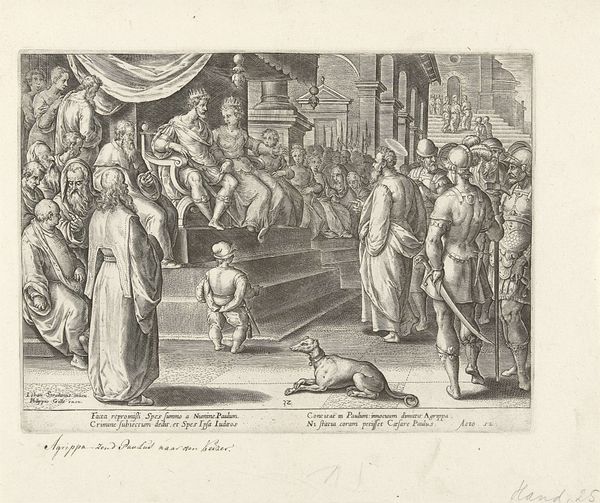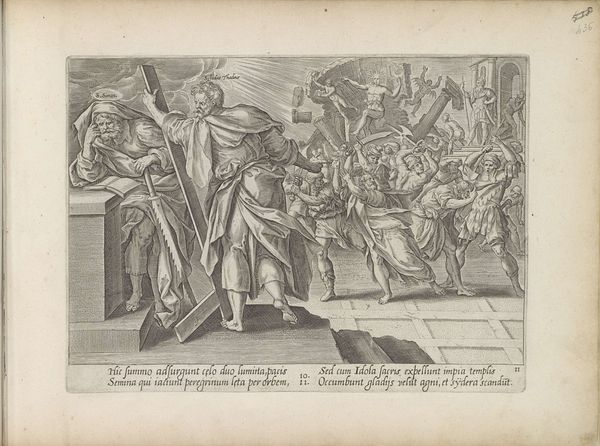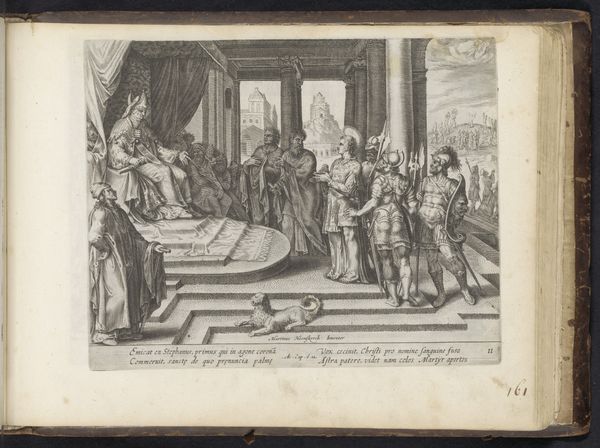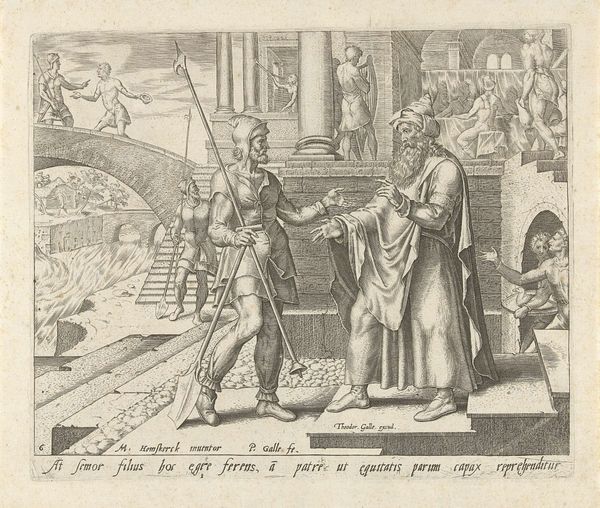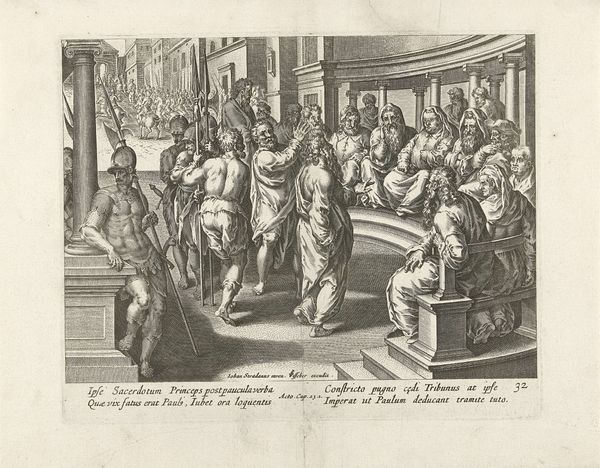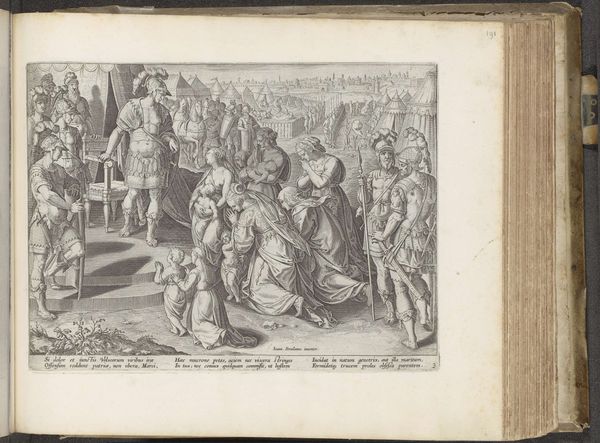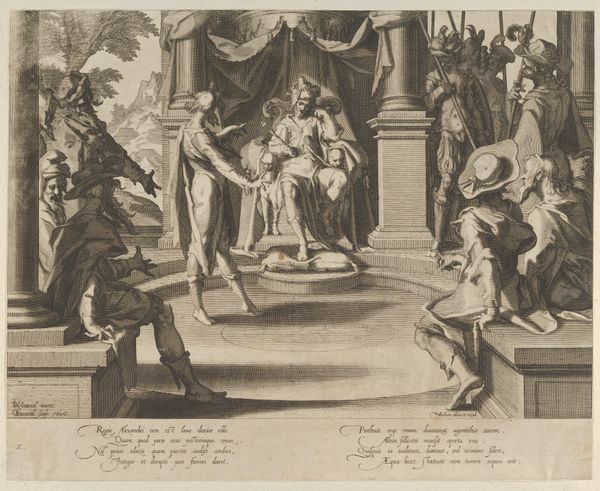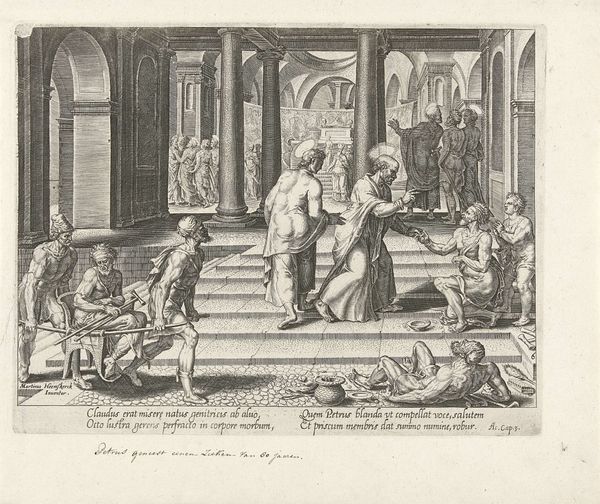
print, paper, engraving
#
pencil drawn
#
aged paper
#
toned paper
#
light pencil work
#
narrative-art
# print
#
pencil sketch
#
old engraving style
#
sketch book
#
paper
#
11_renaissance
#
personal sketchbook
#
sketchbook drawing
#
genre-painting
#
history-painting
#
northern-renaissance
#
sketchbook art
#
engraving
Dimensions: height 217 mm, width 275 mm
Copyright: Rijks Museum: Open Domain
Pieter Jalhea Furnius created this engraving, titled 'Jozef legt de droom van farao uit,' around the turn of the 17th century. During this time, the Low Countries were undergoing significant religious and political upheaval, influencing how biblical narratives were interpreted and visualized. Furnius situates Joseph in the Pharaoh's court, a scene laden with power dynamics and cultural differences. The presence of Joseph, an outsider, interpreting the dreams of the Egyptian ruler underscores themes of intercultural exchange and the potential for marginalized voices to rise in prominence. The artist renders Joseph with a certain grace, emphasizing his role as a divinely inspired interpreter. The dream itself is depicted as a bustling scene, hinting at the future abundance and famine that Joseph foretells. Consider how Furnius uses this biblical narrative to explore the complexities of identity, power, and cultural interaction in a world undergoing profound transformation.
Comments
No comments
Be the first to comment and join the conversation on the ultimate creative platform.
